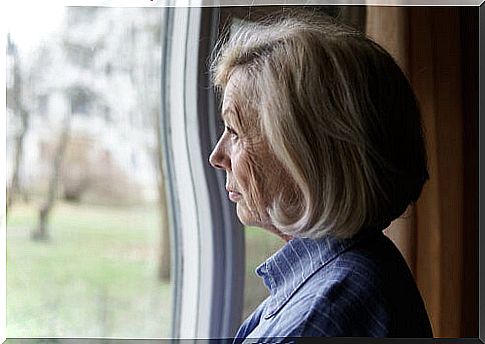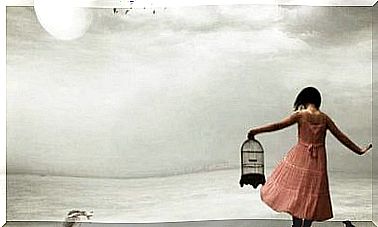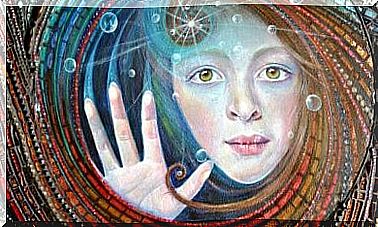The Myth Of Eternal Life Or The Desire To Be A Highlander

Aging is a natural process that can be defined as the set of changes that happens in the biological systems of living beings as a consequence of the passage of time. It is an issue that has greatly concerned human beings, who have focused on the search for eternal life over the years.
Currently, elderly people live longer, but for many the price of continuing to exist is illness, disability and consequently, dependence on the environment …
Next, we analyze the development of the aging process from its beginnings to the present day.

The search for eternal life
In various periods of history, it is observed that the human being has two concerns that underlie everything: on the one hand, immortality or eternal life and, on the other, the search for longevity.
Not surprisingly, the different religions, from Greco-Roman polytheism whose main attribute is the immortality of their gods to the Catholic religion itself, offer man the possibility of achieving eternal life through strict compliance with the commandments, while in other fields such as alchemy and magic, they searched valiantly for the source of life or create the elixir of youth.
These myths of perpetual youth are preserved in today’s societies. Certain traces are observed in the use of creams that advertising is responsible for highlighting ( antiage ), the consumption of vitamin C, special diets, intensive physical exercise programs, cosmetic surgeries and thermal treatments, among others. All of them are part of the methods that are proposed to improve vitality and longevity.
In ancient Greece it was Galen himself who differentiated the Gerontes from the Presbytas, identifying the latter with the stage of decrepitude. It is in Greece where the social recognition of the elderly occurs, the first prescriptions on their care are also established and methods capable of preventing the deterioration generated by aging are created.
Thus, the beginning of old age was determined at 50 years, an age unthinkable for current times, and old age was associated with the ruling or privileged class. It is thus inferred that the lower classes (such as slaves) were severely damaged in terms of hygiene, diseases and food, ingredients that do not ensure the possibility of a long life.
In the Middle Ages, Saint Augustine described old age as an age of stability in emotions, while Saint Thomas Aquinas stood in the Aristotelian tradition, assuming the idea of old age as a stage of decadence.
These and other trends that have their origin in Greek and Roman thought are also inherited by the Renaissance, the Baroque culture, the Enlightenment and are finally transmitted to the thought of the 19th century and from there they reach the present day.
The psychology of old age was founded from the end of World War II, at which time knowledge began to be applied to solve the problems of the elderly and the creation of institutes for their internment. In addition, intellectual abilities such as memory and learning, the adaptation process in old age and its relationship with the level of activity and satisfaction in life were explored.
Some conceptions of old age
Ancient civilizations, such as India or China, devoted great attention to this issue of longevity, in the same way that later Greeks and Romans did.
In the East, being an old man is a prestige; whereas, for example, Eskimo cultures subject disabled elderly people to ostracism, loneliness and death. On the other hand, Comanche women who have entered the menopausal period have access to everything that was barred from them as procreative women. They are similar to Shamans who gain power through dreams.
The aging process is constructed in an ambiguous way : the old is a source of respect and appreciation on the one hand and, on the other, is a factor of marginalization, expressed through rejection. This type of attitude is observed in many societies and tribes.
Among the Dinka in southern Sudan, some notable elders who played an important role in society are buried alive under the corollary of numerous rituals. Among the White Nile Shilluks, elder chiefs are slain at the first sign of weakness. The Koryak of North Siberia, during ceremonial complexes, kill the old men in the presence of all the people. While the Chukchee, they strangle them with a ring in the middle of a great party in which they drink, sing and dance to the beat of the drum.
In an intermediate situation are tribal societies, in which the elders enjoy authority and prestige and profess public magic for the benefit of the community. This power turns the old man into a relevant official who capitalizes on public business.
In classical civilizations such as Greece and Rome, the geronte had a public function and only he had access to the high magistracies : the Council of Elders in Sparta, the Council or Bulé in Athens and the Senate in Rome.
Life expectations?
Today, we are far from the old conceptions of the privilege of being an old man and venerating the exaltedness of his wisdom. There is a multiplicity of factors (living conditions, food, types of work, hygiene) that influence the organic deterioration of the human being.
Despite all these factors that threaten longevity, the history of the human being was marked by the concern around finiteness or, more exactly, to achieve immortality, that eternal life so dreamed of.
Being always young has been a leiv motive pursued by humanity, which is highlighted by the myth of the fountain of eternal youth. Alchemy or magic were arts that struggled to find secrets through spells and rituals, formulas that combined the most exotic elements in order to achieve eternal longevity. Although rather it is an eternal youth, without ailments or suffering due to disability.
Biblical accounts indicate that in a remote and supposed time without war or disease, longevity such as Adam 930 years, Methuselah 969, or Noah 950 were conceived.
Throughout the Roman Empire, life expectancy hovered around 25 years, while in medieval centuries, the result of poor hygiene and a crude life plagued by wars, one aged at 30. During the 19th century, At 30 years old, women were already considered old and at the beginning of the 20th century, life expectancy averaged 47 years.

In this century, the life limits progressively increased, for example, in 1930 the average for men did not exceed 60 years, in 1940 it reached 63 years and in 1970 it exceeded 70 years. Currently, life expectancy in the world ranges from 51.4 years (African countries) to approaching 90 years (European countries -with Spain at the head-, North American and Asian countries such as Japan).
Beyond the context, from the biological point of view, during the aging process progressive changes occur in cells, tissues, organs and in the body as a whole. It is the law of nature that all living things change over time, both in structure and in function.
Aging begins with conception and ends with death, that is, one ages from birth. From the middle of life, so to speak, the musculoskeletal, cardiovascular, endocrinological and cerebral deterioration progresses at an accelerated rate.
However, old age is a state of maximum wisdom: the wisdom of experience. This suggests understanding an active, creative, fighting old age, in pursuit of life. Whoever stagnates, has aged, that is, he grows old because time is allowed to run over the person without taking advantage of this time in the most productive way.
Many elderly people prostrate themselves to wait for death for no reason, just to understand that old age is synonymous with death. This is a poor image that corrodes the positive sense of having arrived at that point on the path of life. But today I assure you: there is a new old age!









